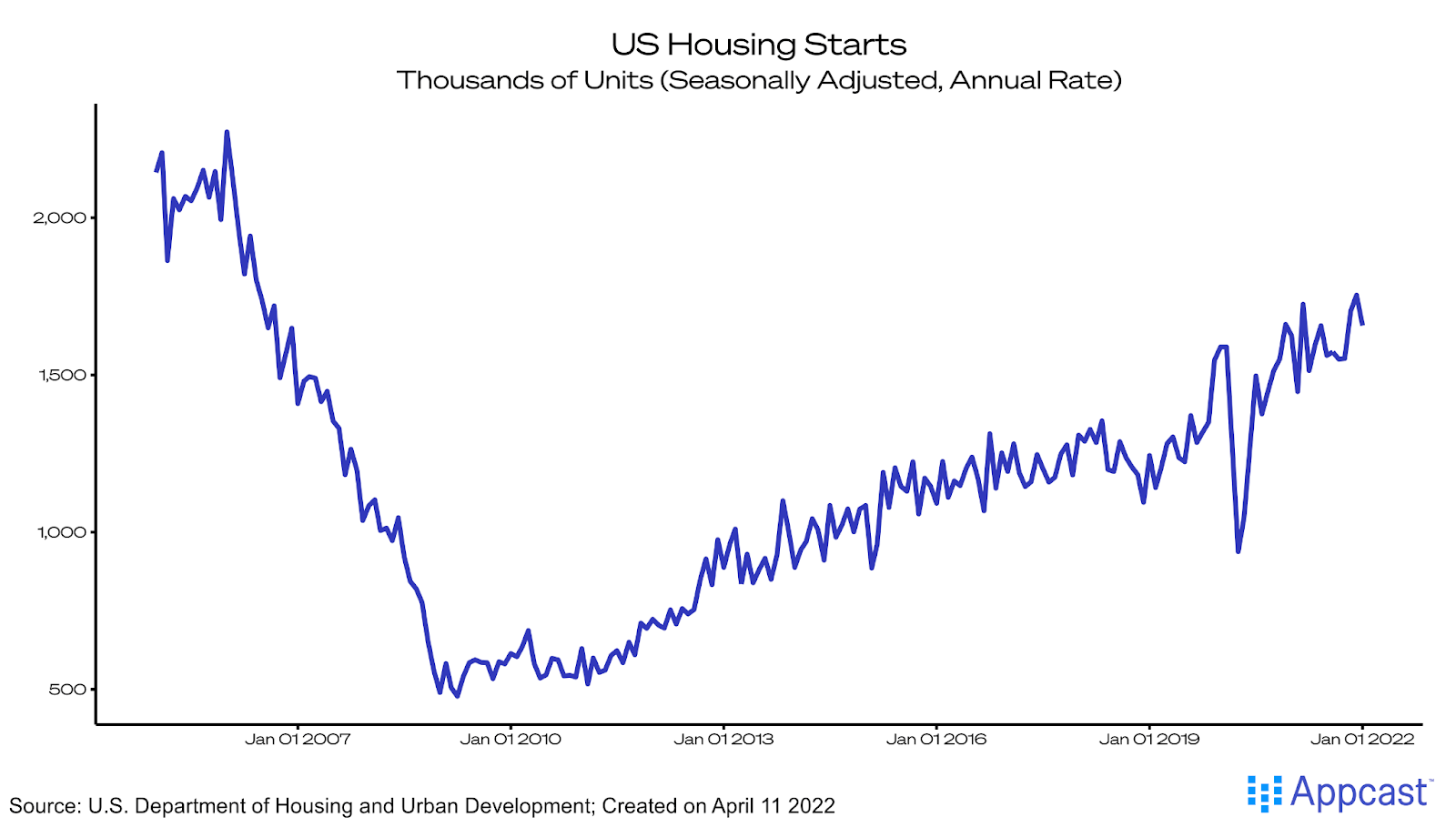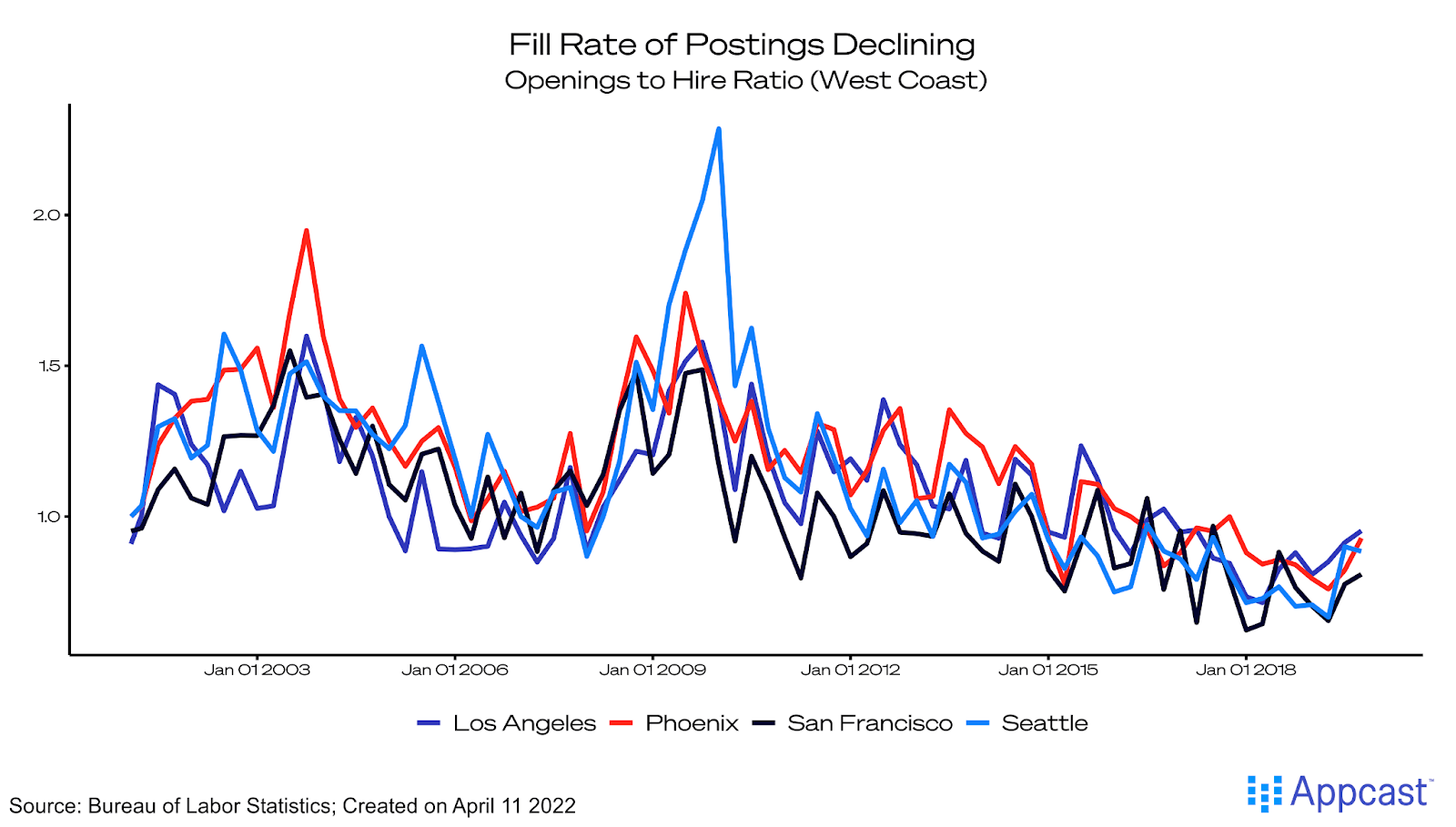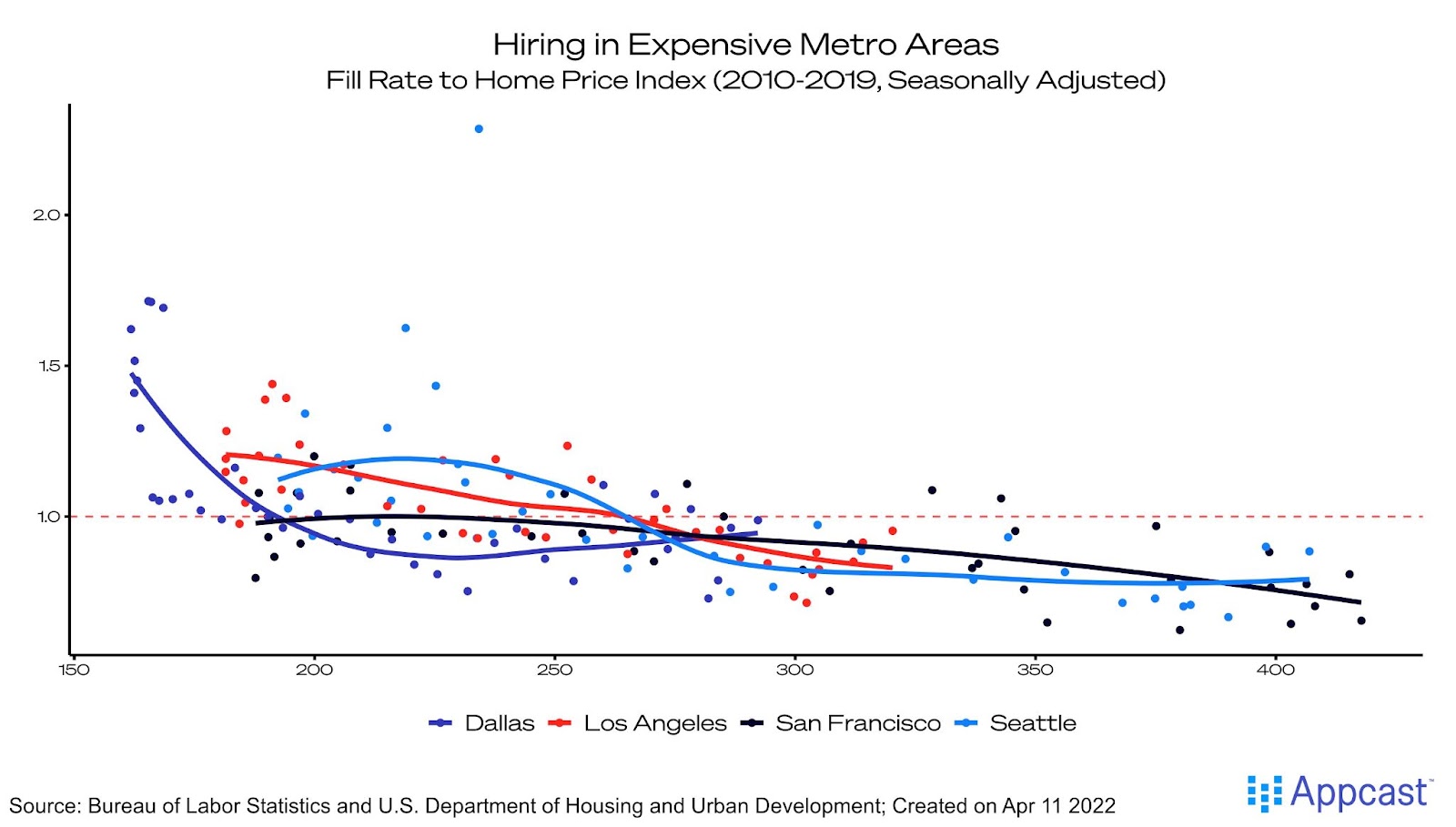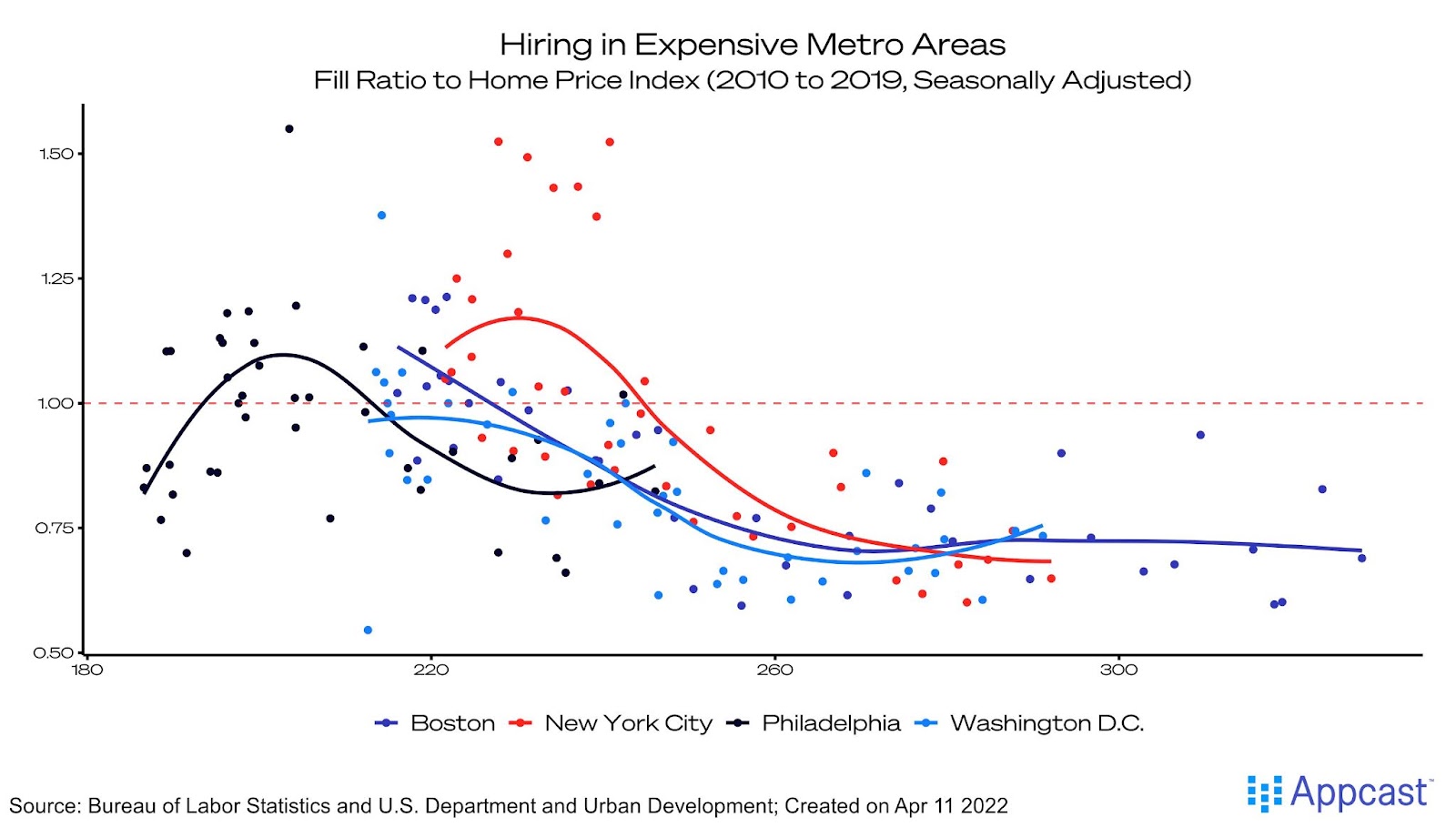Housing costs over the past two years have soared across the country, peaking in August of 2021 by an average of 20%. Pre-COVID, the US already had a severe housing shortage, estimated to be up to 3.8 million housing units. With the population shifts associated with remote work, this problem only compounded and resulted in what can only be described as a national emergency. It’s an emergency not just for the housing market but for the job market too. As home prices skyrocket, it gets harder to hire.
Why? When housing costs are high, it increases the barrier to entry for the labor market. When teachers, firefighters, and nurses are struggling to find affordable places to live, it creates upward pressure on salaries. This is the true impact on hiring, as workers will demand more money to compensate for their higher cost of living.
Following the 2008 recession, new housing starts were 54% lower in January of 2009 than the previous year. After a long period of underbuilding, and with the millennial generation entering into its prime home-buying age, the COVID-related surge in housing prices has created the perfect storm of unaffordability. Restrictive zoning laws and the consequent lack of “missing middle” housing developments (like townhouses and duplexes) have further exacerbated this crisis due to a lack of affordable entry-level homes.

We analyzed Federal Housing Finance Agency data on home prices from 2001-2019 and compared that to Bureau of Labor Statistics data on job openings and hires by metro area. The data presented a clear picture: as metro areas housing prices increased, it became more difficult to fill job openings. When the fill rate (the openings to hires ratio) of a metro area hovered around 1, this meant that for every opening there was a hire. While hiring was easier in the early 2010s, it has only gotten harder since. In the years following the Great Recession, the labor market tightened and finding a quality hire became a greater challenge. This trend only accelerated over the past two years; add a housing crisis and recruiting has become an even more complex issue.

Of 18 metropolitan areas, all had a fill rate below 1 in 2019. In Boston and New York, for every two jobs posted, there was slightly more than 1 hire. Coast to coast, as housing costs increased, the number of hires fell. While there are unique characteristics of every city’s local job market, national-level data demonstrates how much more difficult it is to hire in expensive cities. In 2019, the mean fill rate across the country was 0.71. In cities with a higher home price index, the fill rate fell substantially. Across the board, the fill rate has been falling since 2010, and once 2020 and 2021’s data is released, it’s likely this trend continues.


In 2020 and 2021, competition for workers only grew and dynamics in the housing market forced a tough question: how do we make cities a beacon of opportunity when people are being locked out of housing and jobs? An estimated 4.6% of Bay Area workers in 2019 were dubbed “Super Commuters”, spending as much as three hours a days traveling to and from work. In many ways, this is a policy failure: A failure to expand public transit, build housing where people live and work, and requiring an overabundance of parking within cities. State and local politicians understand the risk this poses to their constituents and are making big changes. In 2019, Oregon legalized fourplexes in all cities above 25,000 people. Minneapolis, Berkeley, and Sacramento have all made similar changes.
When hiring, how do employers account for the housing crunch? Remote work is the most straightforward solution, but increasing base compensation and offering public transportation benefits where applicable could all be solutions. The housing crunch isn’t the only factor affecting recruiting, read about the dynamics of labor supply and how quits rates are affecting recruiting.







